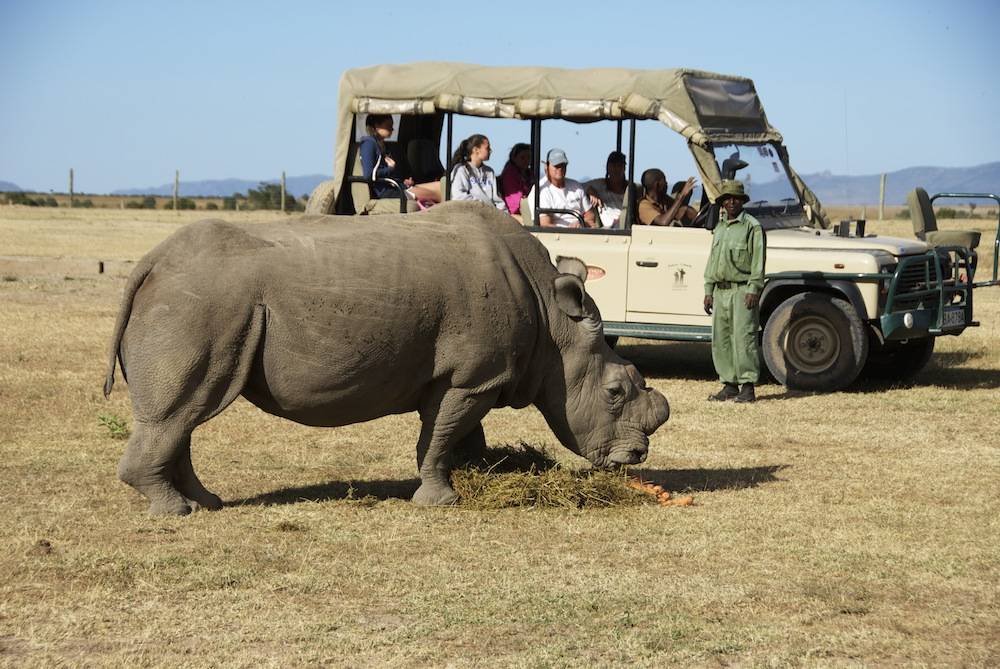Nairobi National Park is located in the heart of Nairobi, the capital metropolis of Kenya.…

Mount Kenya National Park
Mount Kenya National Park is a beautiful national park that protects Mount Kenya, the second-tallest mountain in Africa. Mount Kenya lies at an elevation of 5,199 meters and is surrounded by a World Heritage Site with breathtaking scenery. The surrounding landscape consists of pristine wilderness with lakes, tarns, glaciers, dense forests, mineral springs, and a variety of rare and endangered animal species, high altitude-adapted wildlife, and distinctive montane and alpine vegetation.
Mount Kenya national park was established in 1949 as a protected area with the intention of preserving the originality of Mount Kenya, its wildlife, and the neighbouring environment.
Mount Kenya national park is situated in the east of the Great Rift Valley, approximately 175 kilometers northeast of Nairobi. The park encompasses 2800 square kilometers and is situated at 3000 meters.
HISTORY OF MOUNT KENYA NATIONAL PARK
In 1978, Mount Kenya national park was designated a UNESCO Biosphere Reserve, and in 1997, the forest was added to the reserve to create a UNESCO World Heritage Site. Mount Kenya national park was established by the government of Kenya to benefit the local and national economy of Kenya through tourism, to preserve an area of breathtaking scenery, to preserve the park’s ecosystem, and to prevent the adjacent area from becoming a water catchment area.
The area of Mount Kenya national park was originally the sacred home of the deity “Ngai” who is the god of the kikuyu people, who are very attached to Mount Kenya; the area is still revered as the sacred home of their god “Ngai” to this day. Mount Kenya was named by the Kamba tribe.
ATTRACTIONS IN MOUNT KENYA NATIONAL PARK
WIDLIFE IN MOUNT KENYA NATIONAL PARK
Mount Kenya national park is home to a variety of endangered species of wild animals, including black rhinos, African elephants, genet cats, black fronted duikers, giant forest hogs, antelopes, bongo antelopes, waterbucks, bush pig, skyes monkeys, rock hyrax, suni antelopes, albino zebras, spotted hyenas, and black fronted duikers, among others. In Mount Kenya national park, endangered species include the Sunni Buck, the Mount Kenya Mole Shrew, skinks (lizards), and raptors.
BIRDLIFE IN MOUNT KENYA NATIONAL PARK
Mount Kenya national park is a paradise for birdwatchers, as it is home to over 130 species of birds, including 6 of the 8 Kenya mountains Endangered Bird Areas and 54 of the 70 Afrotropical Highlands biome species found in Kenya. Kenrick’s Starling, Scarlet-tufted sunbird, Purple-throated Cuckoo-shrike, Long-tailed windowbird, African Crowned Eagle, Cape Eagle Owl, Abyssinian Owl, Lammergeier, Olive Ibis, Sharpe’s Longclaw, Jackson’s windowbird, Abbott’s starling, lesser kestrel, and Ayres’s hawk-eagle are among the rare bird species that are exclusive to Kenya.
KENYA SAFARI ACTIVITIES TO DO IN MOUNT KENYA NATIONAL PARK
Mountaineering
Mount Kenya, the second tallest mountain on the African continent, is one of the finest destinations for mountaineering experience in Kenya and Africa. It takes a minimum of five days to climb Mount Kenya to the highest point that humans can reach.
The highest peaks of Mount Kenya are Nelion at 5,188 meters, Batian at 5,199 meters, and Point Lenana at 4,980 meters. Mount Kenya is climbed via numerous trekking trails, including the Summit Circuit, the Nelion normal route, the Burget route, and the Timau track.
There are eight routes for junior climbers to reach the principal peaks, including the Chogoria, Moru, Naro, and Sirimon routes. The Summit Circuit path can also be utilized; this one- or two-day trek circumnavigates Mount Kenya.
Wildlife viewing
Mount Kenya National Park is home to numerous varieties of wildlife; the park consists primarily of Mount Kenya and a forest reserve. The forest reserve is teeming with elephants, leopards, white-tailed mongooses, tree hyrax, mole rats, bushbucks, black-fronted duikers, elands, waterbucks, black rhinos, and cape buffaloes, all of which are readily spotted during a Kenya safari game drive.
Bird watching
Mount Kenya National Park offers rewarding bird viewing; the park is home to more than 130 bird species, including six of the eight Kenya Mountains Endemic Bird Area and fifty-four of the seventy Afro-tropical Highlands biome species found in Kenya. Abbott’s Starling, Lesser Kestrel, Jackson’s widowbird, Sharpe’s Longclaw, Olive Ibis, Lammergeier, Ayres’s hawk-eagle, African Crowned Eagle, African Grass Owl, Cape Eagle-Owl, Purple-throated Cuckoo-shrike, Long-tailed Widowbird, Abyssinian Owl, and Scarlet-tufted Sunbird can be observed in the park.
WHERE TO STAY IN MOUNT KENYA NATIONAL PARK
Mount Kenya National Park has a limited number of accommodations, but those that are present offer the finest amenities and guest rooms to park visitors on Kenya safaris. Among these accommodations are the Serena Mountain Lodge, the Fairmount Mount Kenya Safari Club, and the Castle Forest Lodge.

HOW TO GET TO MOUNT KENYA NATIONAL PARK
Mount Kenya National Park is accessible by both road and air.
By road, Mount Kenya national park is approximately four hours from Nairobi. The road leading to the park is paved, except where it approaches the park’s entrance, where it is rough and difficult to traverse, particularly during the rainy season.
Domestic flights to Mount Kenya National Park are available from Wilson Airport in Nairobi to an airstrip in Naro-Moru, the closest settlement to the mountain.
WHEN TO VISIT MOUNT KENYA NATIONAL PARK
Mount Kenya National Park experiences heavy rainfall from mid-March to mid-June and light rainfall from September to October; however, the park is accessible year-round. However, during prolonged rainfall, the paths tend to become marshy and difficult to traverse. Throughout the day during the arid season, the park is scorched by the sun.



